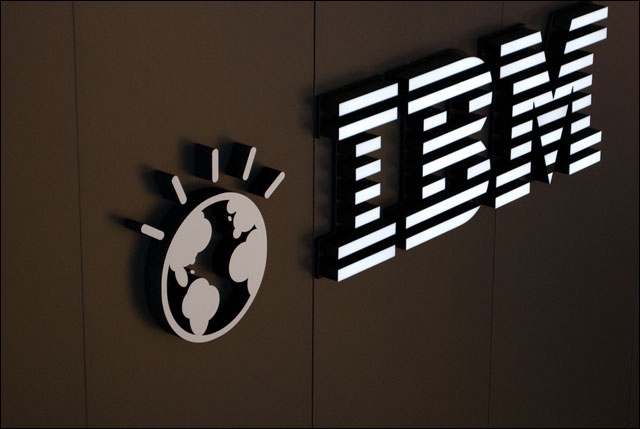
news Technology giant IBM this morning revealed that the City of Bunbury, one of the largest Regional local governments in Western Australia, had selected IBM’s PureSystems technology to streamline and simplify its IT infrastructure and provide a cloud-ready environment to deliver future initiatives such as local Government private cloud computing.
According to IBM, Bunbury was faced with “exponential growth of data and server sprawl”. Consequently, the city needed a “scalable” solution to address not only current needs but to take them into the future. In association with IBM Business Partner Stott + Hoare, Bunbury selected the IBM PureFlex System that integrates server, IBM Storwize V7000 storage, networking and software into a highly automated, simple-to-manage system. Bunbury, along with Stott + Hoare, will virtualize their desktops and mobile devices to reside on the IBM PureFlex system for greater organisational flexibility and ongoing cost reductions.
Traditionally many corporate IT environments have relied on so-called ‘blade’ servers which comprise many powerful small servers housed in the same rack enclosure, with storage and networking tasks performed separately. However, some vendors are increasingly integrating the different platforms together for some styles of deployment. IBM bills its Flex and PureFlex systems as being able to go ‘beyond blades’, offering an alternative to current enterprise computing models.
“Our end goal is to not only deliver exceptional 24/7 levels of service to Bunbury’s residents, but establish the City as a technology leader whose IT systems can become a template for other councils throughout the state and beyond; PureFlex offers us this long-term technical solution,” said City of Bunbury chief executive Andrew Brien.
“We are on the cusp of significant reform where, for instance, the National Broadband Network is only one of several macro changes which will radically shape governance in Bunbury and Australia more broadly. Our primary goal has always been to make sure our IT systems can handle whatever changes may occur while remaining cost-effective and efficient. That way we know that when our own functions of government have to adapt and expand, the technology we use will be able to match us at every turn.”
The City of Bunbury expects the PureFlex-enabled virtual server environment to reduce hardware replacement costs, power consumption and time spent maintaining the multiple platforms that currently sustain the City’s IT operations. Another key factor in its selection was the ease of managing mass storage and disaster recovery. The deal was signed in November and initial delivery was completed on Christmas Eve. The new system went live at the beginning of February 2013.
opinion/analysis
I wrote the following earlier this year regarding a similar IBM deployment at retailer Harris Farm:
From what I can see (and there’s a good overview of Flex published by The Register here), the platform’s pitch relies on the ideal that those purchasing datacentre IT infrastructure would prefer for it to be better integrated — they’d like to be able to easily add on extra power to their server platforms through adding on modular compute, storage, networking and management nodes within the same rack chassis units. While I’m not as clear on the specifics as I’d like to be and there are also quite a few differences between the various platforms, it seems to be that this is very much the same philosophy which is underpinning the development of the Vblock class of systems being developed by the VCE coalition (VMware, Cisco and EMC).
… personally, to me the whole thing smells just a little bit like vendor lock-in, especially for large organisations. While IBM has always been at the top of the class when it comes to server resources, there’s arguably a strong degree of competition in the storage and networking worlds (hello EMC, Hitachi Data Systems, Cisco and so on) that would make me leery about getting too strongly into bed with any one vendor.
I guess it depends on the size of the organisation. Many small to medium-sized businesses would likely find it easier to standardise on smaller numbers of vendors with these kinds of integrated systems, while I imagine larger IT shops would be more likely to keep aspects of functions such as storage, networking, compute and management more separated out, for reasons such as ensuring they can get best of class and cost efficiency in each area. I’d be interested to hear people’s thoughts on these different styles of deployment.
In my view, Bunbury fits into this ‘medium-sized business’ category that would find it suitable to standardise on IBM hardware as opposed to deploying a more diverse stack.
Image credit: Patrick H, Creative Commons

PureFlex is son of BladeCenter, no lock in as its compute and some storage. VMware is probably the most ‘Lockin’ component IMHO
As a previous employee in the IT section for the city, it was always fun working there. The challenging tasks that were always provided due to all the different systems they had made it an awesome experience.
I can see why they did this, there were servers of all different vintages there when i was there a few years ago.
Shame they made a deal with Stott & Hoare for the desktops though, IVC Computers was where we always got the computers from, i guess this time S&H offered a better deal.
this is all well and good, but it doesn’t change the fact that bunbury is a shit hole.
Comments are closed.